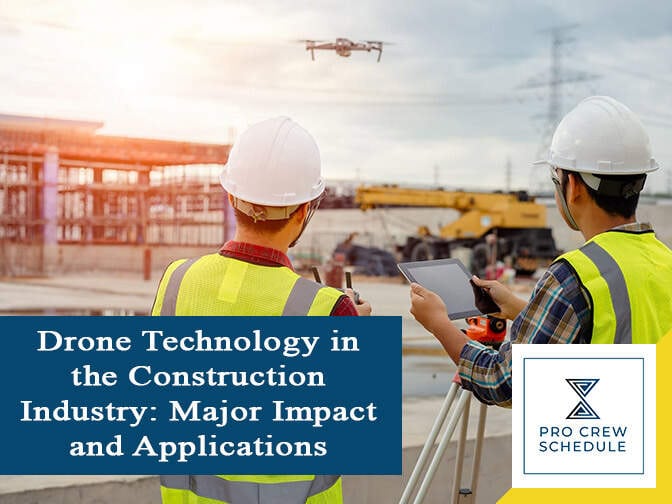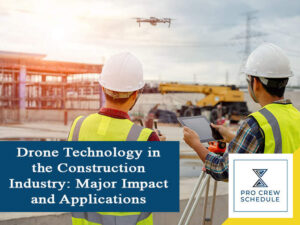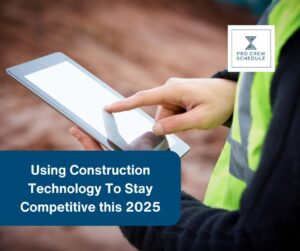The presence of drones or UAVs in the construction industry produced significant changes. Drone technology has already begun changing the many usual ways the construction industry operates. Those changes have lasting effects and are expected to continue as the industry develops. Over the years, drones have become one of the most advantageous construction trends. The industry experienced a 235% growth because of drone utilization for the past few years, which is surprisingly higher compared to other commercial sectors.
For this blog, the significant impact of drone technology in the industry will be outlined, including the six major applications of drones. Take a look below.
Who are the Main Users of Drones on the Job Site?
Drones are light, small and functional type of a device and commonly referred to as UAV or unmanned aerial vehicles. It can capture ultra-high-resolution photos that replace time-consuming site inspection, surveying or hazard analysis. Since UAVs can freely fly to any areas where workers cannot possibly go, it can able to capture robust, cost-effective and safe images of site operations. As drone technology improves and evolves, it also resolves current issues and conducts some of the most hazardous site operations.
So who are the people taking advantage of the drone technology? Technology managers, projects managers, superintendents, contractors are the top roles benefiting from drones. Project managers, in particular, are the ones who are leading the charge always to prepare the drones to the job site. The typical construction project runs over budget and usually behind schedule. Using drones, closing the gap between budget and schedule is easier.
Specifically, drones have impacted the construction industry by:
· Calculating material types and stockpile volume for inventory
· Enabling more efficient construction site monitoring
· Calculating width, length and elevation for structures and roads
· Calculating overburden to prepare an efficient removal
· Annotating maps and images for easier communication
Drones are specifically used to keep records for linear foot materials being installed. It is a way of maintaining a record of the installed equipment used in the conjunction of GPS tools. Most of the construction companies have been using drones to enhance safety in the field further. Moreover, the use of builder trends software has also become mainstream in the industry because it improves the overall construction project management.
Drones are collecting real-time data on situations that may have a negative impact during the process. With no surprise, drones are taking a step ahead in the industry in terms of improving construction processes. Analysis and Planning – are the two major areas where drone technology contributes so much impact.
· Analysis – drone technology is proven to be very advantageous in terms of building information modelling (BIM). This particular modeling is the digital representation of functional and physical characters of buildings and facilities. There are many construction companies today that are pairing up with drone service providers. This form of partnership influence many others and more ideas are being showcased in the industry.
· Planning – one of the amazing things a drone can execute is to collect birds-eye data and do a detailed survey. The data that is to be collected might be otherwise unavailable and it hinders any of the workers who are tasked to gather some survey information. Drones are to the rescue – it allows workers, contractors and project managers to create real-time and more informative building decisions.
For project management, contractors preferably use a construction scheduling software for scheduling, tracking and monitoring purposes. Both of these construction trends have a significant impact in the industry.
The 6 Major Applications of Drones in Construction
With the unique aerial advantage and recorded real-time data, drones can effectively cut costs, improve efficiency and streamline construction workflow. Below are some of the most common ways UAVs are used in the construction.
1. Remote Monitoring and Tracking of Progress Reports
One valuable feature of drones in the industry is the visibility it offers to the clients. UAVs or unmanned aerial vehicles can produce astonishing aerial views and it will give the clients a grasp of the project’s improvements. Most of the time clients are not always present on the site and it is always a good thing that drones can efficiently help them monitor the progress.
Additionally, drone technology functions as crew schedule software because it can further enhance internal collaboration in the team. For instance, during a flyover, the device can send info directly to the software. Engineers, construction managers, owners and workers can access the info anytime. The device is truly useful as it can also create a trail of documents that is essential in many cases.
2. Topographic Mapping and Surveys
When planning large-scale and complex construction projects, using a task scheduler software is very important and consulting topographic maps is likewise crucial. This type of map can reveal expensive design blunders that are ill-suited for terrains. Topographic maps are very useful onsite but it is very costly and will take a lot of time to produce. Due to the situations, maps and plans are not consistently updated amidst the start of the project.
Because of the inability to map immeasurable quantities of land, drones are preferably used. The device is capable of cutting downtime in an exponential manner. By doing so, visualizing the topography of the site is easier. The features showcased by the use of drones ensure the projects will stay according to the budget and within the schedule. Above all, the device can ensure precision and accuracy before even a project is to be initiated. Sending the data can help in identifying feasibility.
Lastly, drones produced high-resolution images and these can be manipulated into 3D models. Doing so, it allows pinpointing rising issues during pre-construction and spotting mistakes directly within the scope. In the long run, it eventually saves money and time.
3. Automating and Equipment Tracking
It’s a common conflict every project manager has faced – forgetting where the equipment is currently located. Apparently, there are tons of lengthy spreadsheets available to review. However, doing so can be a nightmare unless if you have a worker who is responsible for tracking it.
With a drone, the project manager can execute a flyover and quickly asses the tools and equipment used. The device can also recognize quickly if a particular tool is present on the site or not. Thus, it does prevent any accidental extension charges that are very expensive. Another occurring issue on the job site is equipment malfunctions. Good thing that drones have a recording functionality where:
· Remotely accessing the problems taking place will be much easier
· Providing visual representations is much faster
· The recorded data can be sent immediately to any repair technicians
· More accurate diagnostics can be saved even before making it to the worksite
4. Security Surveillance
The construction site is known for having many tools, devices and equipment used on a daily basis. That is why it can be very devastating for the contractors, project managers and owners to lost one of the tools used. For instance, having an excavator or boom lift being stolen can eventually leave you out hundreds of thousands of dollars. A study shows that over $350 million worth of construction equipment is stolen from job site every single year, with less than 30% of it recovered.
Thus, equipment security is essential and should be prioritized. Anyone from the drone operators can directly conduct a flyover and see if any equipment pieces are in its safe location. The surveillance camera can also be used in seeing if there are any unauthorized individuals on the site. It will prevent any form of damage before it occurs.
5. Structure Inspection and Photography
Drones can provide critical inspection during the replacement of bulky scaffolding and heavy machinery. UAVs can be flown around the entire structures to check fine details, stability and take high-solution imagery for critical analysis. The device have thermal sensors that can detect leaks, heat, cold spots and any electrical issues. The level of quality assurance provided by using the device has helped to strengthen client relationships.
Apart from structure inspection, a device like drones can also be used for well-planned maintenance particularly for larger-scale structures like towers, bridges and scaffolding. A particular task that usually takes a whole team of surveyors to do will only take a few hours with the use of drones.
6. Personal Safety
One of the top priorities in any construction company is the safety of the workers. When taking manual measurements, the crew often need to climb higher to dizzy heights. This is the usual situation where accidents might happen. Using drones, workers don’t have to climb because these devices will take place in the situation. Thus, it mitigates the possible risks construction workers have been facing on the field.
Project managers have to ensure to use a drone video camera to track job sites for safety concerns. Doing so, it’ll make sure that workers are properly balanced and equipment/tools are at the secure location, away from harming any of the workers.
Key Takeaways
Though drones cannot replace well-trained and experienced workers, these devices are benefitting the construction industry when it comes to projects and streamlining processes. While the construction industry has an unconvincing reputation for being slow to adopt innovation and technology, the industry’s adaptation of drone technology is a major step towards the right direction.







